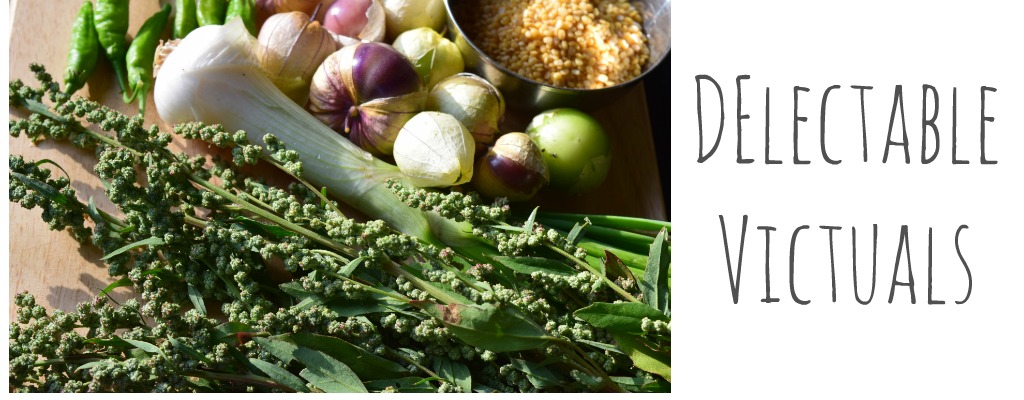Jackfruit Pit: Chakka Kottai Molagoottal
Jackfruit... evokes memories of idyllic childhood, gorging and groaning, waiting for the various forms in which this unique fruit can be consumed thanks to a mom who is a superb cook... it has always been one of my favorite fruits.
Savoring the local seasonal fruits was such a sweet childhood experience for me: Mango season, Jackfruit season, Seethapazham (Custard Apple) season, Chikku/Sapota season, Nagapazham season, Vilambazham season... had to get our fill else we have to wait a whole year before the season comes around and the fruit becomes available in plenty again.
Anyway, D had never beheld a whole jackfruit (chakkai) in its full glory, so, he bought one recently, and went through the process of cleaning it up and extracting the yellow-fleshed sweet fruit sections.
These delicious fruits have a hard pit (kottai), which are edible when cooked, and have a nutty flavor and a meaty potato-like texture that I have a weakness for. [Chakkai Kottai = Jackfruit Pit]. Because of its nutty flavor it is sometimes referred to as Jackfruit Nut or Jack Nut
Molagoottal is a rather mild south Indian dish which can be made with any seasonal vegetable and is a favorite alternative to the spicy curries, sambar and kozhambu. Molagoottal doesn't use any tamarind or spice powders like sambar, and has a delicate base of coconut, peppercorn and cumin. Vaazha Thandu (banana plant stem), white pumpkin or ash gourd, snake gourd, cabbage and carrots, as well as chakkai kottai all lend themselves to a delicious molagoottal which was my mom's specialty.
Molagoottal is usually served with rice and a pachadi. My preferred combination is chakkai kottai molagoottal with chutta kathrikkai pachadi (roasted/charred eggplant pachadi). I had harvested the last of the eggplants from our home-garden... skewered them and roasted them over open flame on my gas stove then followed the recipe as before.
Ingredients
Jackfruit Pits - as many as in picture, maybe more if available
½ cup carrots, chopped
1 cup cooked lentils (I use moong dal)
salt to taste
for the molagoottal base:
4 Tbsp dry grated coconut
1 Tbsp cumin seeds
3-6 dry red chilies (optional)
1 Tbsp whole black peppercorn
tempering:
1 Tbsp canola oil
1 tsp mustard seeds
garnish: curry leaves, cilantro
Preparation
- Pressure cook the jackfruit pits (jackfruit nut, or jack nut) or cook on stovetop till tender but not mushy, like steamed or baked potato; remove the thick jacket/skin from the pits which easily come off when cooked well enough - this layer almost feels like plastic and is not quite edible - it is the pearly white layer seen in the jackfruit pits/nuts picture; the inner thin skin is a beautiful brown and the flesh is almost ivory white
- Combine the molagoottal base ingredients in a blender and grind to a smooth fine paste, adding water as needed
- In a pot, combine the carrots, cooked lentils and jack nut, molagoottal base paste, some water, salt, cover and simmer till flavors meld
- Tempering: heat the oil in a small pan, when close to smoking add the mustard seeds and let them pop, turn off heat so as not to burn them
- Top the molagoottal with these popped mustard seeds and garnish with curry leaves or cilantro
Labels: home-garden, jackfruit, molagoottal, vegetarian







